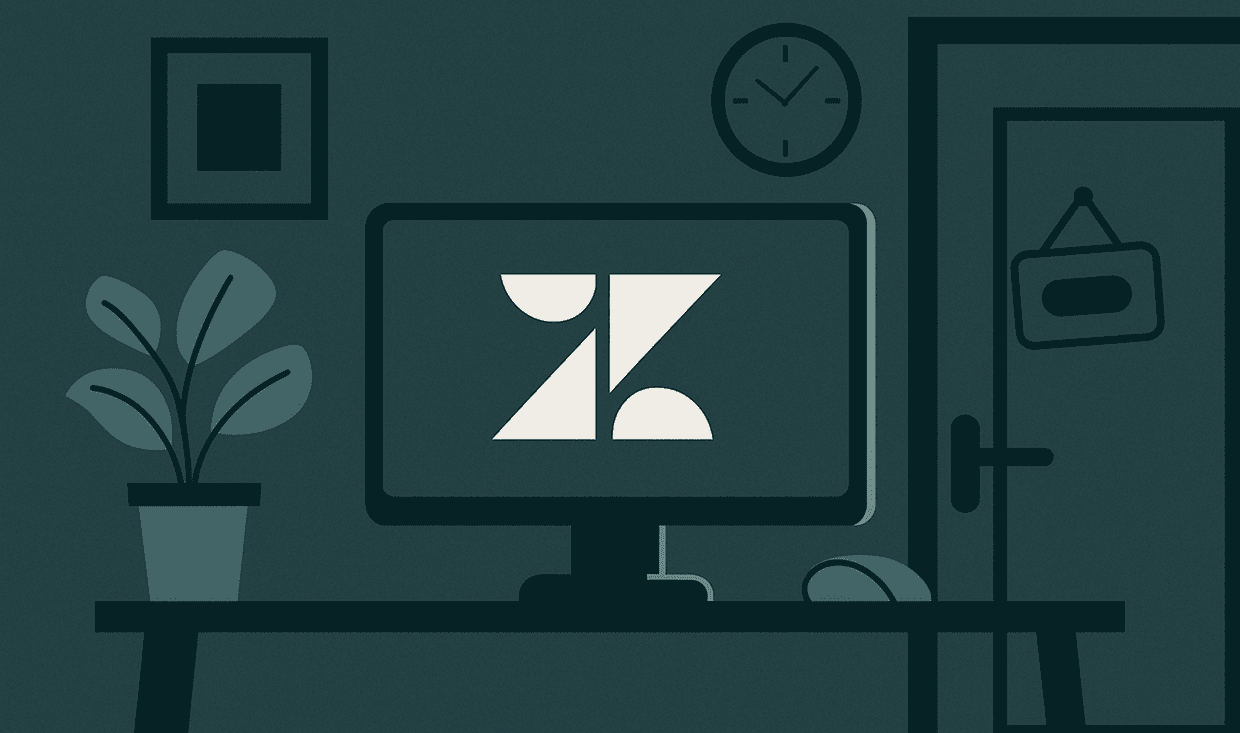Zendesk Sell Shutdown: Survival Guide for Teams

Table of Content
Zendesk Sell Shutdown: Survival Guide for Teams
If you've heard that "Zendesk is shutting down", don't panic. The company itself isn't closing. Zendesk Sell, the sales CRM product, will be retired on August 31, 2027.
Zendesk Support, the company's leading customer service platform, will continue. But for businesses that relied on Sell, this marks the beginning of a big transition.
Why does this matter? Because it's not just about one product ending. It reflects a bigger shift happening in the SaaS world: companies focusing on their strongest areas, moving away from "all-in-one" promises, and embracing AI-driven customer experience.
Let's break down what's changing, why Zendesk made this move, and how your business can prepare for life after Sell.
Why Is Zendesk Retiring Sell?
Zendesk's decision to retire Sell wasn't made overnight. It's the result of strategic shifts and changing market dynamics over the last few years.
Several key factors influenced this move, and understanding them helps explain why Zendesk is stepping away from the sales CRM space:
1. The Private Equity Factor
In 2022, Zendesk was acquired in a $10.2 billion deal by Hellman & Friedman and Permira. Once private, Zendesk no longer had to satisfy quarterly earnings calls.
This gave management the freedom to restructure and make tough choices, such as cutting products that weren't core.
2. Strengths and Weaknesses
Zendesk built its reputation on support software. While Zendesk Sell was a capable CRM, it was competing in a highly crowded market:
- Salesforce dominates enterprise sales.
- HubSpot wins the SMB and mid-market.
- Pipedrive is popular for pipeline-focused sales teams.
Zendesk Sell never achieved the same level of adoption. Supporting it meant stretching resources away from Zendesk's strongest area: support and service.
3. AI as the Future
Zendesk's CEO and leadership team have repeatedly emphasized AI as a key component of the company's future.
Their position is clear: AI will transform support faster than cloud adoption did a decade ago.
By retiring Sell, Zendesk can channel all resources into AI-powered support tools, building features like intelligent routing, predictive analytics, and automation that directly improve customer service.
In short, Zendesk is saying, "We don't want to be a jack of all trades. We want to be the best at customer support in the AI era."
Timeline of Events
Here's a clear timeline of how they got here:
- 2022 – Zendesk acquired and taken private ($10.2B deal).
- 2023–2024 – Strategic reviews, layoffs, and pivot to AI-centric support.
- 2025 (September) – Announcement that Zendesk Sell will retire.
- 2027 (August 31) – Official sunset. Sell will no longer be available; all customer data must be exported before this date.
The extended runway is deliberate. Zendesk knows migrations take time. Providing businesses with two full years reduces disruption and allows customers to evaluate alternatives carefully.
What Zendesk Sell's Retirement Means for Businesses
For current users, the impact is significant. Let's break it down.
1. Data Migration
All deals, contacts, activity logs, and custom fields in Sell must be migrated to a new CRM. Risks include:
- Data loss: Poor exports may drop fields or notes.
- Context loss: Moving raw data doesn't guarantee historical insight is preserved.
- Compliance risks: Sensitive customer data must be transferred securely.
2. Workflow Disruption
Many companies use Sell and Support together. Examples:
- New deal closed → automatically create an onboarding ticket in Support.
- A support issue logged → inform the sales rep handling that account.
With Sell gone, these workflows break. Teams will need to rebuild integrations in their new CRM.
3. Training and Retraining
Switching CRMs isn't just technical; it's human.
Your sales team will need to learn new interfaces and workflows. Retraining can cause temporary productivity dips.
4. Customer Experience Risks
Customers feel the most significant danger. If handoffs fail, if response times are slow, or if historical context is missing, customer satisfaction and loyalty suffer.
The challenge is bigger than "find another CRM." The real task is re-engineering your sales + support connection for the modern era.
The Bigger Picture: Industry Trends Behind Zendesk's Pivot
Zendesk's decision to retire Sell isn't happening in a vacuum. It reflects a broader shift across the SaaS and customer experience (CX) landscape.
From private equity reshaping software companies to the rapid adoption of AI-first strategies, Zendesk's pivot highlights the pressures and priorities shaping the entire industry.
To understand what this move truly means, it is helpful to step back and examine the broader trends driving change.
1. Specialisation Over "All-in-One"
The market is moving away from bloated, do-everything tools. Mid-sized players are focusing on their areas of strength.
2. AI as a Core Strategy
AI is no longer a feature; it's the foundation. Customer service platforms are rebuilding around automation, predictive support, and generative AI assistants.
3. Composable Stacks
Businesses are increasingly building "composable" tech stacks: pick the best CRM for sales, the best platform for support, and the best marketing automation tool, then integrate them.
4. Private Equity Efficiency
Zendesk's new owners want profitability. That means doubling down on winners (Support + AI) and cutting distractions (sell).
For customers, the message is clear: the future of CX will be AI-first, specialised, and flexible.
How to Prepare for Zendesk Sell's Retirement?
Here's a practical roadmap to prepare for Zendesk's retirement:
- Audit your usage: List all the ways you use Sell today. Which workflows touch Support? Which data is critical?
- Pick your next CRM: Zendesk has partnered with Pipedrive for migration. Many businesses will also evaluate HubSpot, Zoho, or Salesforce, depending on needs.
- Plan your data migration: Don't wait until 2027. Export data early. Test imports to ensure clean field mapping.
- Redesign workflows: Rebuild sales → support handoffs in your new stack. Utilise APIs, automation tools, or middleware (such as Zapier or Workato) to integrate systems.
- Adopt an AI support tool: Use this opportunity to modernise your customer support. Implement AI platforms that deflect repetitive tickets, offer omnichannel inboxes, and provide no-code automation.
The Role of AI in the Post-Sell Era
Zendesk's pivot itself proves it: AI is the next frontier.
Why AI is essential now:
- Customers expect instant, always-on support.
- Repetitive queries (such as password resets, order status, and billing FAQs) drain teams.
- Businesses need to cut costs without cutting quality.
AI helps by:
- Deflecting routine tickets (e.g., "Where's my order?").
- Improving resolution rates with intelligent routing.
- Providing 24/7 coverage without hiring night shifts.
- Enhancing human agents with suggested replies and contextual insights.
The best approach is to roll out AI gradually, train it on your existing knowledge base, keep humans in the loop, and refine it continuously.
Modern Alternatives for Support
Replacing Zendesk Sell is only half the journey. The other half is ensuring your customer support stack is ready for the AI era.
A modern support platform should:
- Centralise chats, emails, WhatsApp, and socials in one inbox.
- Provide AI replies for common queries.
- Offer no-code automation for workflows.
- Integrate seamlessly with whichever CRM you choose.
If you’re evaluating support tools and wondering how we compare, see our detailed ReplyCX vs. Zendesk comparison for a side-by-side breakdown of features, pricing, and usability.
How ReplyCX Fits Into the Post-Zendesk Sell Era
Zendesk Sell's retirement means businesses need both a new CRM and a strong support platform.
This is where ReplyCX helps by focusing on AI-powered, omnichannel support while integrating smoothly with whichever CRM you choose.
- AI assistance: Handles repetitive queries like order tracking or password resets instantly, reducing agent workload.
- Omnichannel inbox: Brings chat, email, WhatsApp, and social messages together so no conversation slips through.
- No-code workflows: Automate routing, tagging, and follow-ups without requiring developers.
Integrations: Ensure that sales and support stay aligned, even when they operate on different systems.
Your Future Starts with a Conversation.
- 30-minute commitment-free call
- Live product demo so you can see how AI customer service helps your business grow
- Discover how we can customize ReplyCX for your industry and business needs
Conclusion
Zendesk is not shutting down. But Zendesk Sell will officially sunset on August 31, 2027. Businesses that use it need to prepare for migration now, not at the last minute.
Handled poorly, the retirement could mean lost data, broken workflows, and unhappy customers. Handled well, it's a chance to:
- Upgrade to the right CRM for your sales team.
- Modernise your support with AI-driven platforms.
- Build a flexible, composable stack that's ready for the future.
Zendesk's pivot is a signal to the market: the future of customer experience is AI-first, specialized, and integrated. Companies that adapt early will gain not only continuity but also a competitive advantage.

Yash Shah
Yash Shah is a tech-savvy Growth Marketing Specialist (ReplyCX), skilled in accelerating business growth, performance marketing, and SaaS SEO. Certified in Growth Hacking and backed by 6,300+ LinkedIn followers, he combines strategic sales development with operational execution to build scalable results.


